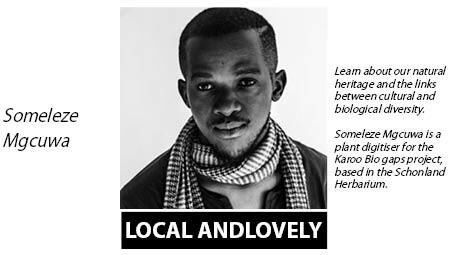Name: Pachycarpus concolor E.Mey.
Family: Apocynaceae
Common names:
Engl. Astral Pachycarpus/Thick-fruit
Xho. Itshongwe
Description
A low growing, stout rather straggling herb. Leaves: Shape variable, margins flat to wavy, harshly hairy. Flowers: Large, 11-25 mm, lobes, oval, spreading-erect, purplish brown, green, yellowish or with spots (October-April). Fruit: Oval, semi-inflated, ± 5 fleshy ridges.

Conservation status
According to the SANBI (South African National Biodiversity Institute) Red list of South African Plants, Pachycarpus concolor was not selected in any one of four screening processes for highlighting the potential taxa of conservation concerns for a detailed assessment and was, hence, given an automated status of Least Concern (L.C.). Widespread, common and not in danger of extinction. http://redlist.sanbi.org
Distribution and habitat
- Concolor is found in open grassland, from dry stony hills to flat sandy coastal flats, coast to 1200 m. It is widespread across eastern South Africa, from Limpopo to the Eastern Cape, and extending into Zimbabwe, Mozambique and Botswana. Provincial distribution: Eastern Cape, Gauteng, KwaZulu-Natal, Limpopo and Mpumalanga.
Derivation of name and historical aspects
Pachycarpus is derived from Greek pachys (thick); karpos, (fruit), alluding to the large, leathery fruits. Concolor means same colour. Itshongwe derives from intshongo meaning exudate, referring to the milky sap of the plant.
Uses and cultural aspects
Roots of Itshongwe are used to treat STI’s.
Growing Pachycarpus
As with many members of this family that have a deep root stock, it is quite difficult to cultivate the plants. Plants of Pachycarpus generally have some of the most spectacular flowers in the sub-family Asclepiadoideae but are not in general cultivation. The flowers last but a few days, the fruit and stems are not very attractive and the stems die back after fruiting and in the colder months. All this probably discourages growers from attempting cultivation. The various species are furthermore prone to infestation by many different insects.
References and further reading
Dold, T., Cocks, M. 2012. Voices from the Forest, Celebrating Nature and Culture in Xhosaland. Jacana Media, Sunnyside, Auckland Park, South Africa.
Pooley, E. 2005. A Field Guide to Wild Flowers, KwaZulu-Natal and the Eastern Region. The Flora Publications
Trust, c/o Natal Herbarium, Botanical Gardens Road, Durban 4001.



